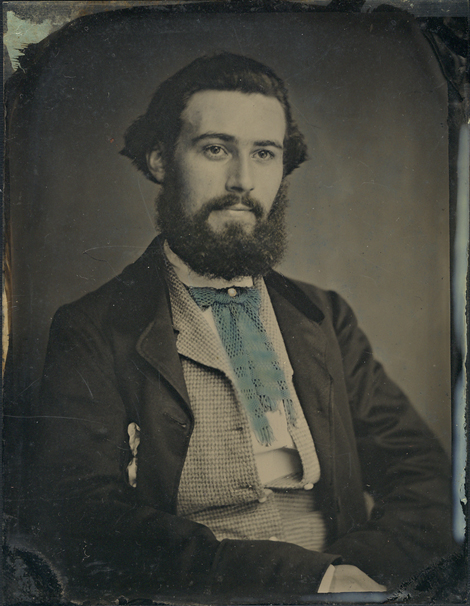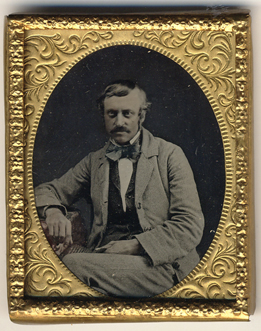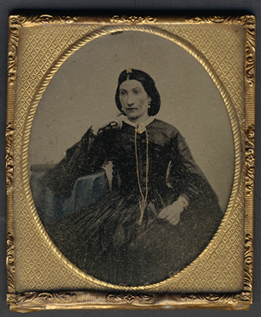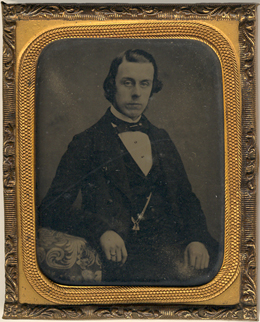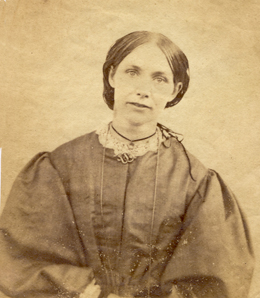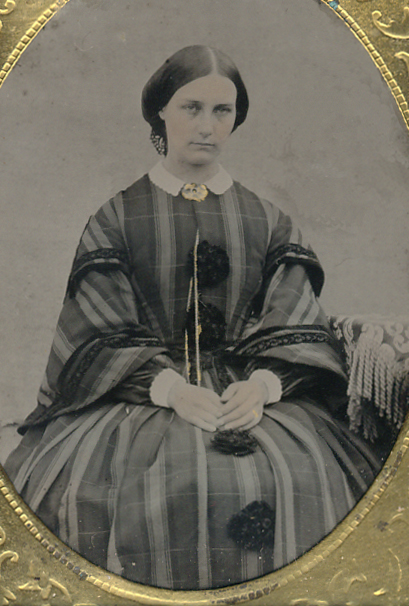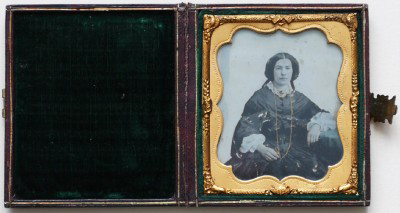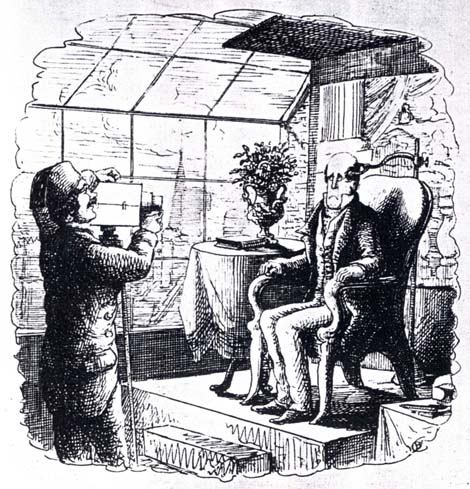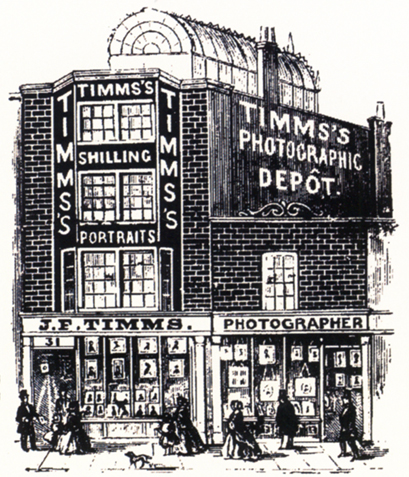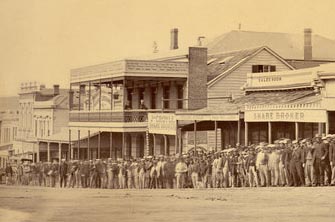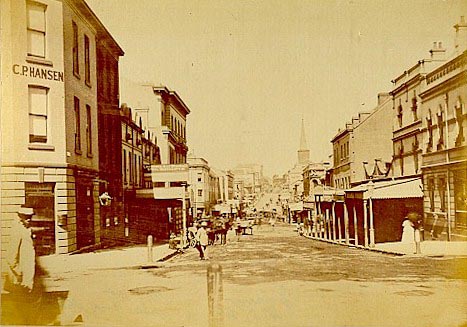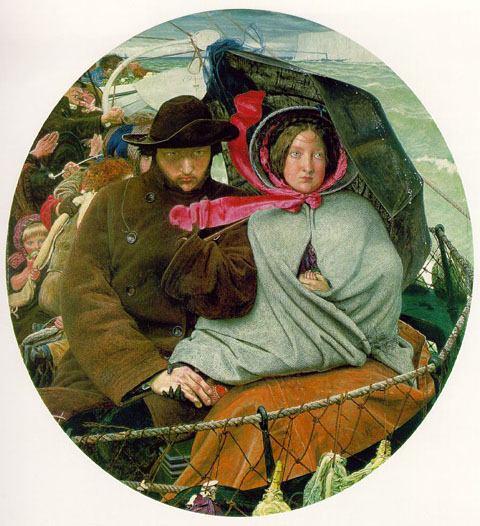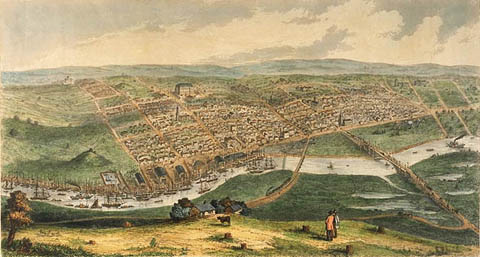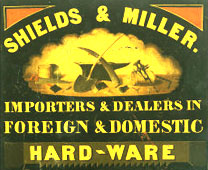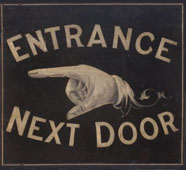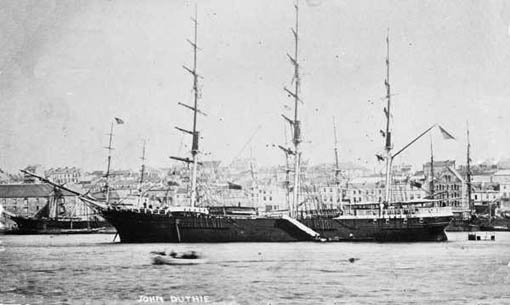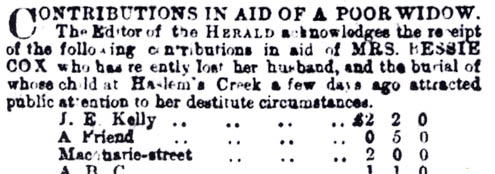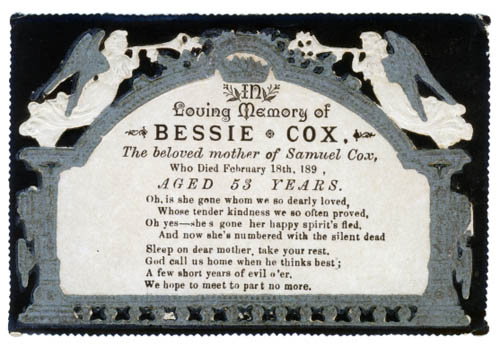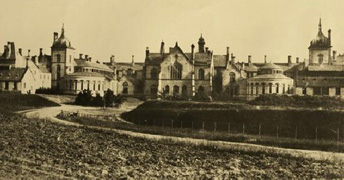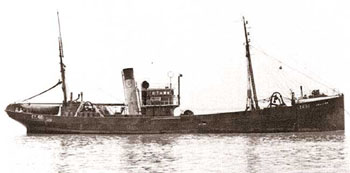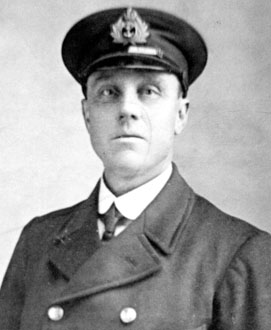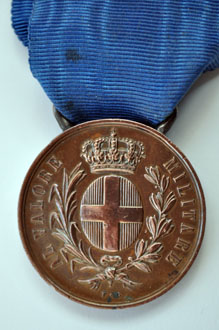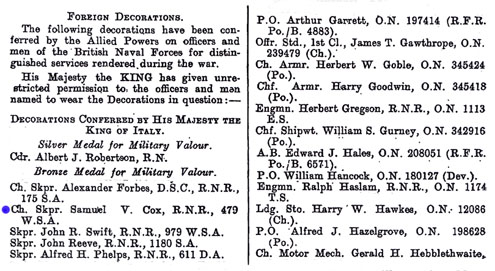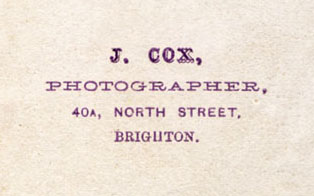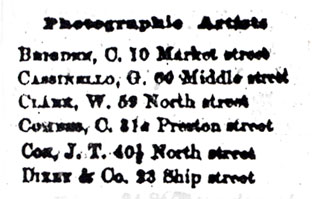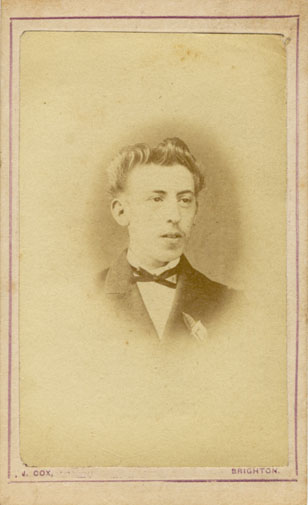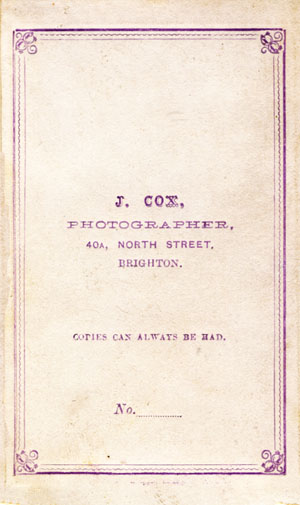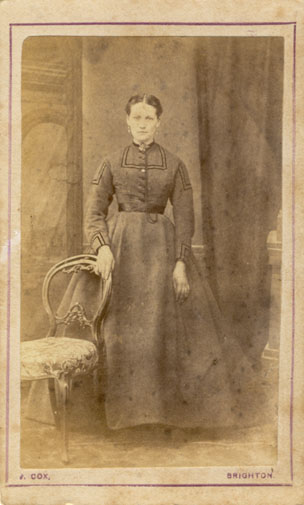| Samuel
George Cox (1824-1876) Samuel George Cox
was born in Bedford, Bedfordshire in 1824, the son of George
and Sarah Cox. (Samuel Cox was christened at St Paul's
Church, Bedford on 23rd May 1824). Samuel's father,
George Cox (born c1792),
who is reported to have been a "Glass Dealer",
had married Sarah Browne (born c1793) in
Cardington, Bedfordshire
around the year 1814. Samuel appears to have been one of nine
children born to
Sarah
and George Cox. Samuel Cox's eight siblings, three girls and five
boys, were Mary Ann Cox (born 1815),
Eliza Cox (born 1817),
Sarah Cox (born 1820), Joseph Cox (born 1822),
John Cox (born 1826),
Benjamin
Cox (born 1828), George
Cox (born 1830) and David Cox (born 1822). Two of Samuel's
brothers died in infancy - John Cox died on 28th January 1831, when
he was 4 years of age and his younger brother
George
Cox died at the age of 15 months on 1st January 1832.
In 1846, in the Tynemouth district of North-East England, Samuel
George Cox married Mary Burn (born c1819, North Shields), the
eldest daughter of Elizabeth Taylor and Jacob Burn
(1797-1871). Local directories indicate that Jacob Burn, Mary's
father, was a employed as a pilot in the seaport of North Shields.
Samuel George Cox - Stationer
& Bookseller in Brighton
By 1851, Samuel George Cox and his wife Mary had settled in
Brighton. The 1851 census records Samuel George Cox as a 24
year old "Stationer & Ticket Writer" at 24 Queen's Road,
Brighton. Sharing the family home was Mrs Cox's youngest sister, 17
year old Elizabeth Burn, and her brother-in-law Adam Mathewson
(born c1823, Scotland) who was married to Mary's sister, Margaret Burn
(born c1824, North Shields).
The 1851 edition of the Post Office Directory of
Brighton lists Samuel Cox as a "Stationer" at 24
Queen's Road, Brighton. Cox's stationery business was situated on the
western side of Queen's Road, a few doors away from the Feathers
Tavern.
Queen's Road was a
recently constructed commercial thoroughfare, built in 1845 to improve the
access to Brighton Railway Station from North Street and West
Street. When Samuel Cox set up his business at No. 24, Queen's Road
was still being developed and a number of buildings were added to the
thoroughfare during the early 1850s. The addition of dozens of shops,
businesses and public buildings during this period meant that the existing
business premises in Queen's Road had to be re-numbered;
The
Feathers Tavern which had been numbered 22 became No. 53 and
Samuel Cox's stationery business changed its shop number from No. 24 to
No.55. During the development of Queen's Road in the early 1850s,
Samuel Cox acquired the building next-door (No.56) which had
previously housed the naturalist William Pike.
By 1854,
Cox's business premises spanned two shop fronts, local trade directories
recording Samuel George Cox as a "Wholesale
and Retail Stationer, Print-seller and Bookseller" at 55 & 56
Queen's Road, Brighton.
|
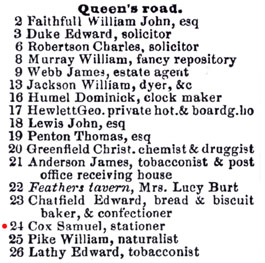
|
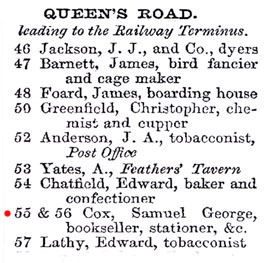 |
|
[ABOVE]
Samuel Cox listed as a stationer at 24
Queen's Road, Brighton in Kelly's Post Office Directory of
Sussex (1851). A year or so later, the numbering of the
buildings in Queen's Road changed. Samuel Cox's shop number
changed from No. 24 to No. 55 Queen's
Road, Brighton. |
[ABOVE]
Samuel George Cox listed as a
bookseller and
stationer at 55 & 56 Queen's Road, Brighton in the 1855 edition
of Kelly's
Post Office Directory of Sussex. Samuel Cox had extended his
business premises by acquiring William Pike's shop at No. 56
(previously No. 25)
Queen's Road, Brighton. |
It appears that, in addition to his stationery
business in Queen's Road, Brighton, Samuel George Cox also
operated a Fancy Goods Bazaar at The Swiss Gardens in
Shoreham-by-Sea, some 6 miles west of Brighton.
Created in 1838 by a local ship
owner named James Britton Bally (1789-1863), The Swiss Gardens
had been developed as a "pleasure resort" in the 1850s
by Edward Goodchild (1815-1878). The Swiss Gardens was a
very popular place of entertainment, including amongst its many
attractions a very large ballroom, a dining hall, a refreshment bar and a
boating lake. A legal notice published in 1856 noted that Samuel George Cox had been the Keeper of the "Fancy
Goods" Bazaar in The Swiss Gardens, Shoreham, for 4 seasons
(probably during the period 1852-1855).
|
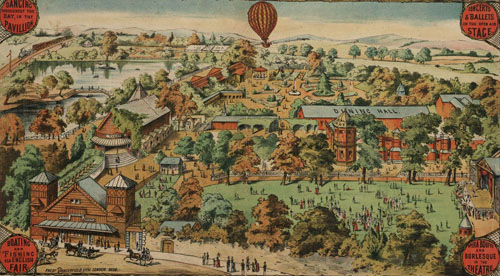
|
|
[ABOVE] A 19th century coloured
lithographic poster advertising The Swiss Gardens at
Shoreham, a seaport town
situated six miles west of Brighton. Between 1852
and 1855,
Samuel George Cox operated a fancy goods bazaar in The Swiss
Gardens.
Created in
1838 by James Britton Bally, a wealthy shipbuilder,
the
Swiss Gardens were developed into a popular pleasure resort
after the main railway line reached Shoreham in 1841.
During the 1850s, Edward Goodchild, the new proprietor of the
Swiss Gardens, added a number of attractions to the amusement
park, including a large dining room, a ballroom, a theatre and a
refreshment bar
and confectionery. After paying a basic admission charge (one
shilling for adults, sixpence for children under ten years of age),
visitors could amuse themselves on the boating lake or play games on
the lawns. For a small extra charge, day-trippers were able to
participate in "billiards, rifle-shooting and American Bowls".
Among the "recent
improvements" to the pleasure gardens added in 1855 was a "New
Photographic Gallery on the Lawn" owned by the Brighton
photographer William Lane (1818-1889). |
|
|
W. J. Taylor's Original Brighton & Hove Directory of 1854
lists Samuel George Cox as a "Wholesale and Retail Stationer,
Print-seller and Bookseller" at 55 & 56 Queen's Road, Brighton.
However, before the end of 1855, Samuel George Cox was in severe
financial difficulties and by February 1856 he had been imprisoned as an
insolvent debtor in the County Gaol in Lewes. At the time of his
arrest, Samuel George Cox was living at 55 Gardner Street,
Brighton. On 1st March 1856, Samuel George Cox was declared
"out of business" and an "insolvent debtor".
|
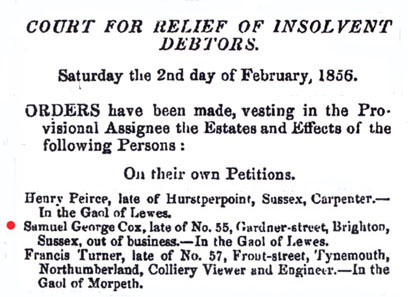
|
|
[ABOVE]
Samuel George Cox, an "out of business" stationer and insolvent
debtor recorded as a prisoner in Lewes Gaol in February 1856
(London Gazette). |
| |
|
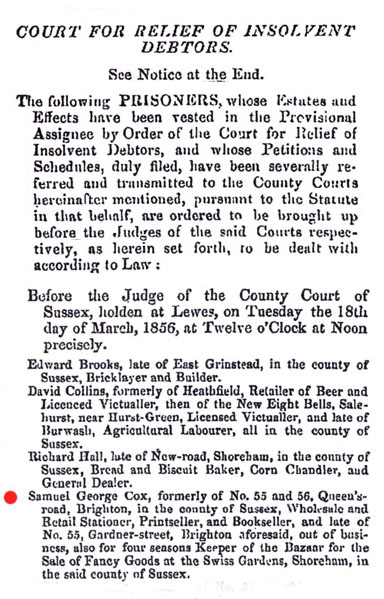 |
|
[ABOVE]
Samuel George Cox, described as a former "Wholesale and
Retail Stationer, Printseller and Bookseller" at No. 55 & 56
Queens Road, Brighton, summoned to the County Court at
Lewes for a hearing of "insolvent debtors" to be held on
18th March, 1856 (London Gazette). |
On his release from the debtors' prison, Samuel
George Cox entered into a relationship with Elizabeth Dorothy Dorrell
Burnell (born 23rd September 1832, Bembridge, Isle of Wight), a young
woman who was set to inherit money and property from her maiden aunt,
Mary
Dorrell Burnell
of 10 Crescent Place, Brighton. It appears that Miss Mary
Burnell had adopted Elizabeth, her brother's daughter, when the
young girl had lost (or been abandoned by) her father.
When Miss
Mary
Dorrell Burnell,
the young woman's guardian, died on 26th May 1857 at the age of 57,
Elizabeth Dorothy
Dorrell
Burnell
was informed by her solicitor that she was due to inherit her late aunt's
money, stocks and property on her 25th birthday.
|
The
Mysterious Origins of Elizabeth Burnell |
|
In 1856, Elizabeth Dorothy Dorrell (Dorrill)
Burnell was living with her aunt Miss Mary Dorrell at 10
Crescent, Place, Marine Parade, Brighton. Miss Mary Dorrell had adopted Elizabeth when
she was young. It appears that Elizabeth Dorrell Burnell was the grand-daughter of Roger
Vaughton Burnell (1770-1837) and Dorothy Dorrell of Eastham,
near Worcester, yet the identity of Elizabeth's parents is not
clear. One suggestion is that she was the illicit
offspring of
Elizabeth Harling (Herling) and
George Chambers Burnell,
a son of
Roger Vaughton Burnell. [See panel on George Chambers Burnell,
below] |
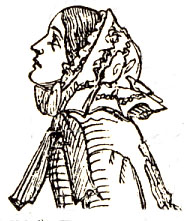 |
|
In
the August of 1857, Miss
Elizabeth Burnell went to board with Samuel George Cox,
then described as a "photographic artist" of 9c
St
George's Road,
Brighton.
Miss Burnell's solicitor, John Randall, was alarmed by his client's
close relationship with Samuel Cox, noting that the former
stationer and bookseller had failed twice before in his business dealings.
Elizabeth Dorothy
Dorrell Burnell was to become the beneficiary
of her
late aunt's will on
23rd
September
1857, her 25th birthday. Stocks from her aunt's business interests became
available to Elizabeth Burnell on 26th October 1857.
John Randall, the family solicitor had noted that
Miss Burnell was "a
person on whom the world will easily impose".
Evidently, Elizabeth Burnell planned to provide Samuel
Cox with funds to develop his business at
9c St
George's Road,
Brighton.
(The construction of a glasshouse studio, to be attached to Cox's premises
in St George's Road, would have required a certain amount of capital and
Samuel Cox had recently been declared an
"insolvent debtor").
During his correspondence with Miss Burnell, John Randall
discovered that the young heiress had
sold her stocks and purchased four houses and had entered into a business
partnership with Samuel Cox.
|
George Chambers Burnell
-
The putative father of
Elizabeth Burnell
G eorge
Chambers Burnell (born 1794, Birmingham) was the son of
Roger Vaughton Burnell and Dorothy Dorrell
and the
brother of Mary Dorrell Burnell, who became the guardian of
Elizabeth Dorothy Dorrell Burnell. It appears that
George
Chambers Burnell was
a bigamist and Elizabeth was one of a number of illicit or
illegitimate children he fathered.
George
Chambers Burnell had seduced Hannah Partridge, a 16 year old girl
from a very rich family in Bromsgrove.
George
Chambers Burnell was obliged to take Hannah Partridge as his wife,
but this did not stop him marrying
at least two other women. Commissioned as a lieutenant in the
British Army,
George
Chambers Burnell was stationed on the Isle of Wight, where he
bigamously married Elizabeth Harling (Herling) in 1831.
[Marriage recorded in Northwood, Isle of Wight on 14th December
1831].
Elizabeth Dorothy Dorrell Burnell, who was born on the Isle of Wight
on
23rd
September 1832,
was probably a child of this union.
George
Chambers Burnell's second wife (Elizabeth
Harling) died shortly
after the birth of
Elizabeth Dorothy Dorrell Burnell.
George
Chambers Burnell bigamously married Elizabeth Dore
in Northwood, Isle of Wight on 2nd June 1835.
George
Chambers Burnell also fathered five illegitimate children with a
Bromsgrove woman named Elizabeth Toogood.
It is believed that
George
Chambers Burnell later moved to Brighton where he spent the
remaining years of his life.
|
Samuel George Cox -
Photographic Artist in Brighton
It appears that
Samuel George Cox had set himself up as a "Photographic Artist" in
Brighton in 1856 or 1857. In August 1857, when
Miss
Elizabeth Burnell joined Samuel Cox at his shop in
St George's Road,
Brighton,
the couple entered into a business partnership, forming the firm of Cox
& Burnell. During the Summer of 1857,
Samuel Cox and his mistress Elizabeth Burnell,
established a cigar
and tobacco store at 9c St George's Road, Brighton.
Attached to Cox & Burnell's tobacconist business in St
George's Road was a
"Photographic Glasshouse"
where customers could have their portraits taken at a very reasonable
cost. An advertisement for "Cox & Burnell's Cigar and Tobacco Depot
and Photographic Glasshouse" appeared in the 1858 edition
of F. R. Melville and Co.'s Directory & Gazetteer of Sussex.
Published in September 1858, the advertisement in Melville's Directory
informed the public that photographic portraits "were taken in all
weathers" at Cox & Burnell's "Photographic Glasshouse"; prices
for each portrait ranging from 1 shilling to 21 shillings.
Up until 1852, William Constable (1783-1861), the
proprietor of the Photographic Institution, (Brighton's first
daguerreotype portrait studio, which opened in November 1841) held a
virtual monopoly in the production of photographic likenesses in the town.
After the patent rights on daguerreotype portraiture came to an end
in August 1853 and with the introduction of Frederick Scott Archer's
"wet collodion" photographic process in the early 1850s, there was
a rapid increase in the number of photographic portrait studios in
Brighton. In 1851 there was only one photographic portrait studio in
Brighton (William
Constable's Photographic Institution at 57 Marine Parade,
Brighton). By the end of 1853,
there were about six places in Brighton where a photographic
likeness could be made. By the time
Melville and Co.'s
Directory & Gazetteer of Sussex was issued in September 1858,
the number of photographic portrait studios had risen to
16.Samuel
George Cox might have begun his career as a "Photographic Artist" as
early as 1856 and there is evidence that he had opened his
"Photographic Glasshouse",
in partnership with Miss Elizabeth Burnell, during the Summer of 1857.
Burnell & Cox were based at 9c St George's Road,
Brighton for about a year. By the time Folthorp's General
Directory for Brighton, Hove & Cliftonville was published in
February 1859, Samuel Cox and Elizabeth "Bessie"
Burnell had moved their tobacconists shop to 40
1/2
North Street, Brighton. There must
have been a photographic studio still attached to the cigar and tobacco
store because Samuel Cox is recorded as a professional photographer
at
40
1/2
North Street, Brighton
in the listing of "Photographic and Talbotype Artists" featured in
Robert Folthorp's Trade Directory of 1859.
It appears that Samuel Cox eventually left his wife
Mary to cohabit with
Elizabeth Dorrell Burnell.
(The couple were not free to marry. According to other sources of information, Mrs Mary Cox,
Samuel Cox's legally wed wife, did not die until 1900).
During the 2nd Quarter of 1860, Elizabeth Burnell gave birth to a
baby boy named George Dorrell Burnell. The father of the child was
Elizabeth's lover, Samuel George Cox. When
Elizabeth Burnell registered her son's birth she
was living at No. 2 St. George's Street (since re-named Pelham
Street), a street of houses at the foot of Trafalgar Street.
It seems that by 1859, Samuel George Cox and
Elizabeth Dorrell Burnell were
living as man and wife (possibly in
St. George's Street) and running a tobacconists business at
401/2
North Street,
Brighton under the name of
"Cox & Burnell". (In later documents, Elizabeth and
Samuel Cox claimed that they had married in Brighton in 1858, yet there is
no evidence to show that this was the case). In 1860,
Samuel George Cox sold his photographic
studio to the William Lane (1818-1889), a Brighton photographer who
had been taking portraits on glass since 1852.
Before the end of 1860,
Samuel George Cox and
Elizabeth Dorothy Dorrell Burnell decided
to leave England and set sail for Australia where they hoped to start a
new life with their baby son George.
|
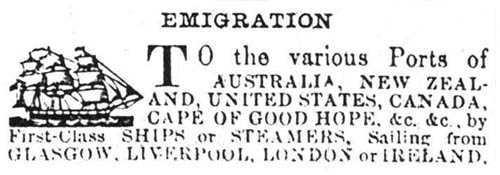
|
|
[ABOVE] A
detail from an advertisement published in 1860 promoting emigration to
Australia and other countries. |
|
|
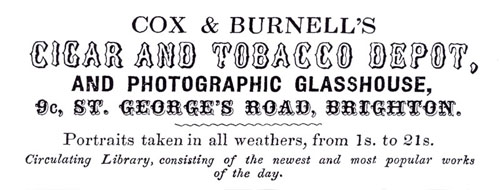 |
|
[ABOVE] An
advertisement for
Cox & Burnell's 'Photographic Glasshouse' studio which
appeared in the 1858 edition of Melville and Co.'s Directory
& Gazetteer of Sussex.
Samuel George Cox (born 1824, Bedford), a former stationer
and bookseller, had set himself up as a 'Photographic Artist' at 9c St
George's Road, Brighton in
1857. In August 1857, Samuel
George Cox was joined in his business by Elizabeth
Dorothy
Dorrell Burnell (born 1832, Cowes, Isle of Wight) |
| |
|
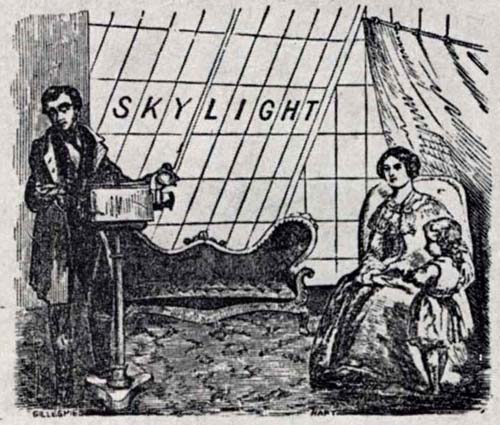 |
|
[ABOVE] A
woodcut engraving, dating from around 1854, depicting a photographer
taking a portrait of a woman and her child inside a glass-walled
studio. The photographic artist has uncapped the lens of the camera
and is timing the exposure with his watch. It was common for
early photographic studios to be situated at the top of buildings,
either in
glass-houses or in upper storeys fitted with large, glass skylights
to make the most of available sunlight. This woodcut, showing an
early photographer at work in a glass-walled studio, illustrated an
advertisement for a Photographic Gallery in Chicago operated by the
Canadian-born daguerreotype artist Alexander Hesler
(1823-1895). |
| |
|
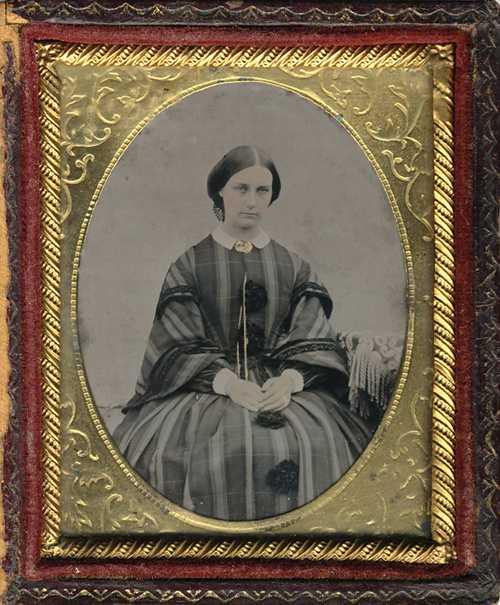 |
|
[ABOVE] A 'collodion positive' portrait of a young woman, photographed
on glass around 1859.
The brooch and watch chain worn by this young lady has been
highlighted in gold. Samuel
Cox was probably producing portraits like this at the
photographic studio attached to his cigar and tobacco depots in
St George's Road and North Street, Brighton. This
portrait has been mounted in a 'pinchbeck' metal frame,
incorporating an embossed gilt mat, and presented in a morocco
leather case. A cased portrait of this size and quality would
probably sell for 2s 6d. |
| |
|
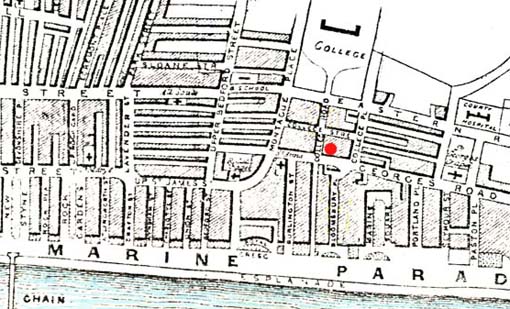 |
|
[ABOVE] The
location of Cox & Burnell's Cigar & Tobacco Depot and Photographic Glasshouse at
9c St George's Road marked on a mid-19th century map of
Brighton. |
|
|
|
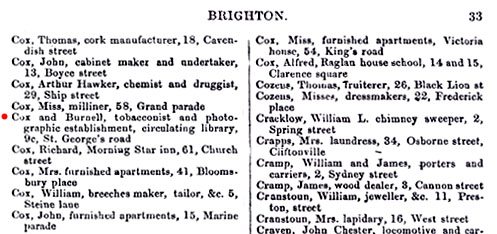 |
|
[ABOVE] A
section of Melville's General Directory of Brighton listing
the trades people with the surname of Cox who were residing in
Brighton in 1858. |
|
 |
|
[ABOVE] The
firm of Cox & Burnell, tobacconist and photographic
establishment, listed at No. 9c St
George's Road, Brighton in the 1858 edition
of Melville and Co.'s Directory
& Gazetteer of Sussex.
|
|
|
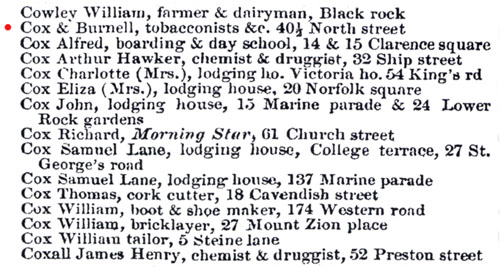 |
|
[ABOVE] The
firm of Cox & Burnell, tobacconists and photographers,
listed at 40
1/2
North Street, Brighton
in the 1859 edition of
Robert Folthorp's General Directory of Brighton.
|
| |
|
Photographic and Talbotype Artists (1859) |
|
(As Listed in Folthorp's Brighton Trade Directory of 1859) |
|
James R. BATES |
10
North Street Quadrant, Brighton |
|
Charles COMBES |
Chain Pier
Esplanade, Brighton |
|
John COMBES |
62 St James Street,
Brighton |
|
William CONSTABLE |
58 King's Road,
Brighton |
|
Samuel G. COX |
40
1/2 North
Street, Brighton |
|
Robert FARMER |
59 North Street,
Brighton |
|
Samuel FRY |
79 King's Road,
Brighton |
|
GREY & HALL |
13 St James' Street,
Brighton |
|
HENNAH & KENT |
108 King's Road,
Brighton |
|
William LANE |
213 Western Road,
Brighton |
|
MERRICK & Co. |
33 Western Road,
Brighton |
|
J. C. NEVILL |
27 St George's Road,
Brighton |
|
Thomas ROSSLYN |
10 Western Road,
Brighton |
|
George RUFF |
45 Queen's Road,
Brighton |
|
James WAGGETT |
193 Western Road,
Brighton |
|
Francis R. WELLS |
27 St James' Street,
Brighton |
|
|
[ABOVE]
Samuel G. Cox listed as a professional photographer at No. 40
1/2
North Street, Brighton
under the heading of 'Photographic and
Talbotype Artists'
in Robert Folthorp's
General Directory for Brighton, Hove & Cliftonville,
compiled during the first few months of 1859. |
| |
|
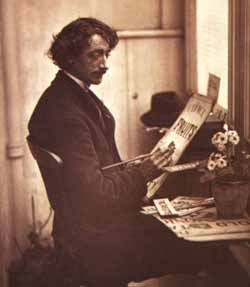
[LEFT]
Portrait of a 'Ticket Writer' at work, photographed by John
Thomson (1837 -1921). |
[LEFT] Portrait of
a 'Ticket Writer' at work, photographed by John Thomson (1837 -1921).
This photograph illustrated the book Street Life in London
(1877) by John Thomson and Adolphe Smith. The
sign-painter depicted was a Frenchman (nicknamed "Tickets" after his
trade), who was struggling to make a living as a "ticket writer",
the occupation that Samuel Cox followed in Brighton during
the early 1850s and the one to which he returned to twenty years
later when he was living in Sydney Australia during the 1870s. A
ticket writer painted the signs that appeared in shop windows or
fixed on the walls of common eating-houses. The signs, which were
painted on sheets of thick card, announced prices, special offers
and simple descriptions. Thomson and Smith mention the following
examples - "Cheap", "The latest novelty", "Try our
own dripping at 6d a lb." and "A Good dinner for 8 pence".
The ticket writer in this photograph is painting a sign which is
headed "Choice Fruits". |
| |
|
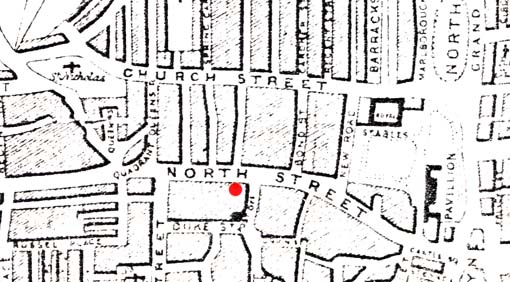
|
|
[ABOVE] The
location of Samuel Cox's photographic studio at 40
1/2
North Street
marked on a mid-19th century map of Brighton. The foot of
Queen's Road, the road in which Samuel George Cox
was running his stationery and bookselling business in the early
1850s, can be seen running into The Quadrant to the west of
North Street.
Queen's Road led to Brighton Railway Terminus. |
|
|
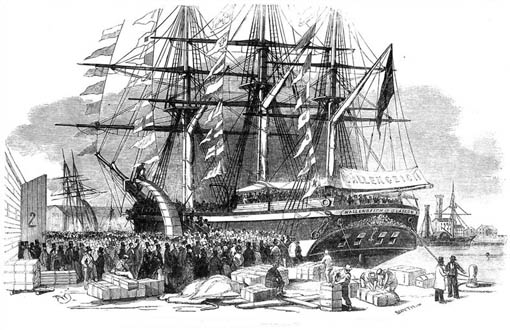 |
|
[ABOVE] An
emigrant ship leaving Southampton for Australia. ( An
engraving from the London Illustrated News, 28th August
1852 ). Samuel Cox and Elizabeth Burnell emigrated to
Australia early in 1861 |
|
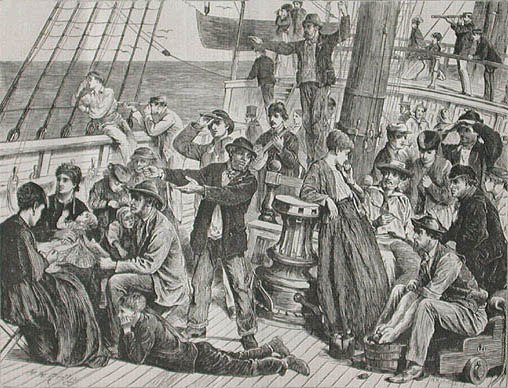
|
|
[ABOVE]
On Board an Emigrant Ship, an engraving by Matthew
White Ridley (1837-1888) produced as an illustration for
The Graphic magazine in 1871.
Samuel
Cox and Elizabeth Burnell, together with their baby son
George, arrived in Melbourne, Australia, in
August 1861 after seven months at sea. |
|
|


















